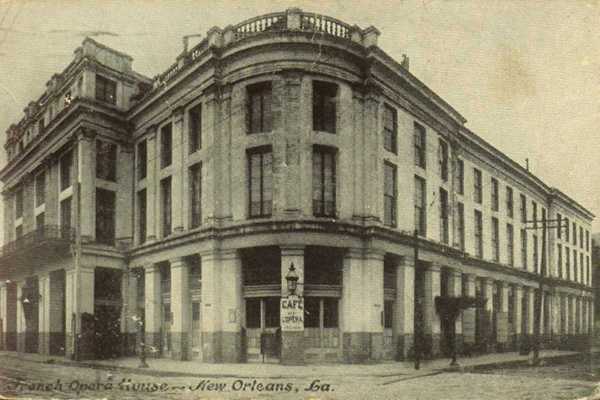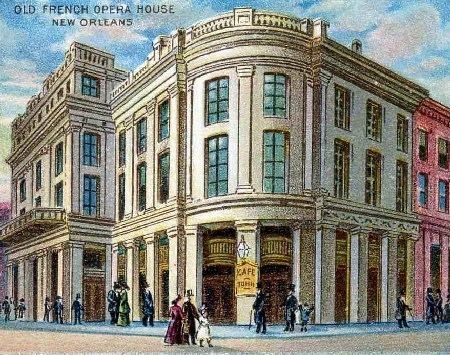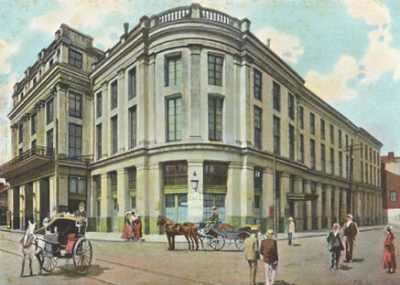Function Opera house | Architect James Gallier, Jr. | |
 | ||
Similar New Orleans African A, New Orleans Jazz Nati, First Bank and Trust Tower, Confederate Memorial Hall, 2 Canal Street | ||
John baron discusses the french opera house in new orleans
The French Opera House, or Théâtre de l'Opéra, was an opera house in New Orleans. It was one of the city's landmarks from its opening in 1859 until it was destroyed by fire in 1919. It stood in the French Quarter at the uptown lake corner of Bourbon and Toulouse Streets, with the main entrance on Bourbon.

Designed by James Gallier, Jr., the hall was commissioned by Charles Boudousquié, then the director of the opera company, which had previously made its home in the Théâtre d'Orléans. After a dispute with new owners of the Orléans, Boudousquié determined to build a grand new house for French opera. The building went up in less than a year at a cost of $118,500 and for the next sixty years, it was the center of social activity in New Orleans. Not only opera was held there, but also Carnival balls, debuts, benefits, receptions, and concerts. On May 23, 1859, the New Orleans Delta gave a description of the new theater:


By April 25, 1862, New Orleans had been captured by Union forces in the US Civil War and the French Opera ceased to present performances until the end of the war. However, in 1864, the wife of Union General Nathaniel P. Banks held a ball at the theater in honor of George Washington's birthday. At the end of the War, the French Opera House was reopened and continued to present many American operatic premieres.

By 1913, however, the house had fallen on hard times and was forced into receivership. An anonymous donor (later identified as William Ratcliffe Irby) purchased the building and donated it to Tulane University, along with the wherewithal to operate it under the new leadership of the French tenor Agustarello Affré. The building reopened, but went up in flames on the night of December 4, 1919. The last performance was Giacomo Meyerbeer's Les Huguenots, a long favorite amongst old family Creoles. [WPA Photograph Collection]
The French Opera House itself was the most fashionable establishment in New Orleans in the years between the Civil War and World War I. The first night of the opera season was the opening of the social season in New Orleans, and it is an important feature of New Orleans social life, attendance being a social event of importance in accordance with its rituals and traditions. The French Opera season became the center of social life for New Orleans' elite, with the oldest and most prominent families owning seats in the theater's boxes or "Loges Grilles".
